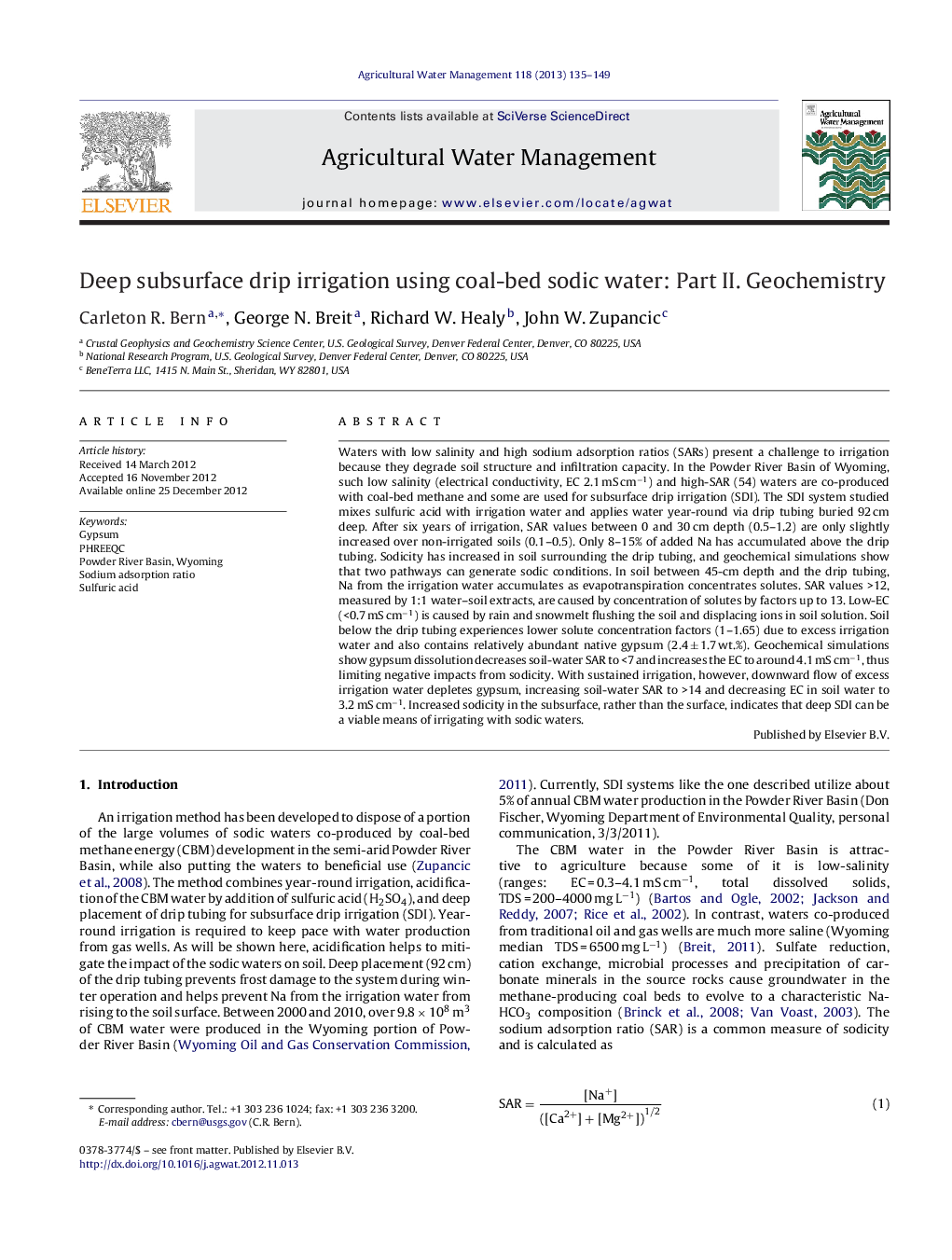| Article ID | Journal | Published Year | Pages | File Type |
|---|---|---|---|---|
| 4478953 | Agricultural Water Management | 2013 | 15 Pages |
Waters with low salinity and high sodium adsorption ratios (SARs) present a challenge to irrigation because they degrade soil structure and infiltration capacity. In the Powder River Basin of Wyoming, such low salinity (electrical conductivity, EC 2.1 mS cm−1) and high-SAR (54) waters are co-produced with coal-bed methane and some are used for subsurface drip irrigation (SDI). The SDI system studied mixes sulfuric acid with irrigation water and applies water year-round via drip tubing buried 92 cm deep. After six years of irrigation, SAR values between 0 and 30 cm depth (0.5–1.2) are only slightly increased over non-irrigated soils (0.1–0.5). Only 8–15% of added Na has accumulated above the drip tubing. Sodicity has increased in soil surrounding the drip tubing, and geochemical simulations show that two pathways can generate sodic conditions. In soil between 45-cm depth and the drip tubing, Na from the irrigation water accumulates as evapotranspiration concentrates solutes. SAR values >12, measured by 1:1 water–soil extracts, are caused by concentration of solutes by factors up to 13. Low-EC (<0.7 mS cm−1) is caused by rain and snowmelt flushing the soil and displacing ions in soil solution. Soil below the drip tubing experiences lower solute concentration factors (1–1.65) due to excess irrigation water and also contains relatively abundant native gypsum (2.4 ± 1.7 wt.%). Geochemical simulations show gypsum dissolution decreases soil-water SAR to <7 and increases the EC to around 4.1 mS cm−1, thus limiting negative impacts from sodicity. With sustained irrigation, however, downward flow of excess irrigation water depletes gypsum, increasing soil-water SAR to >14 and decreasing EC in soil water to 3.2 mS cm−1. Increased sodicity in the subsurface, rather than the surface, indicates that deep SDI can be a viable means of irrigating with sodic waters.
► Water with low salinity (electrical conductivity, EC 2.1 mS cm−1) and high-SAR (54). ► Acidification by sulfuric acid, year-round irrigation via drip tubing 92 cm deep. ► After six years, SAR values between 0 and 30 cm depth in SDI soils are 0.5–1.2. ► 8–15% of added sodium has accumulated above the drip tubing. ► Low salinity and high sodicity exist in soil surrounding the drip tubing.
